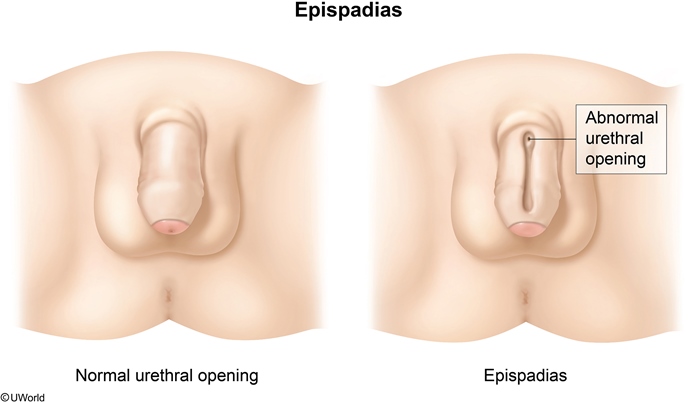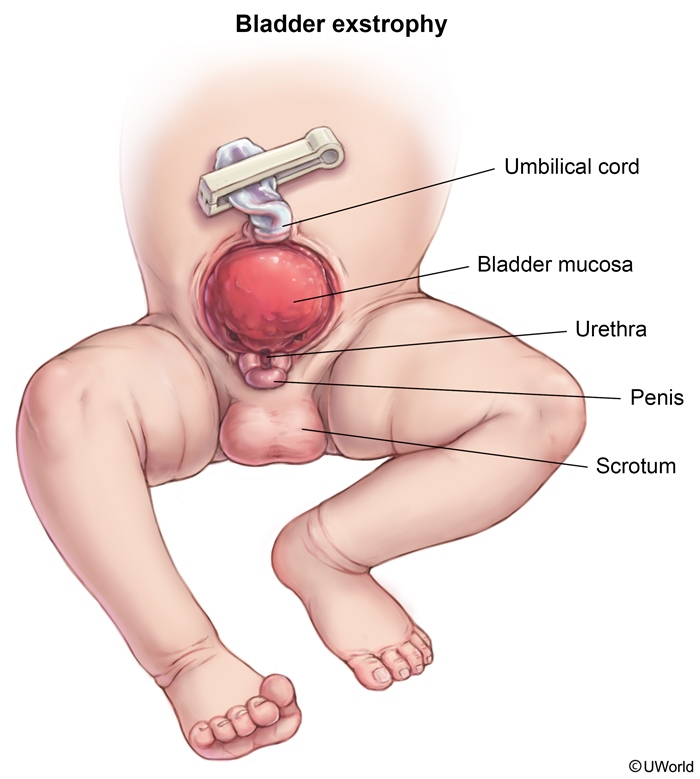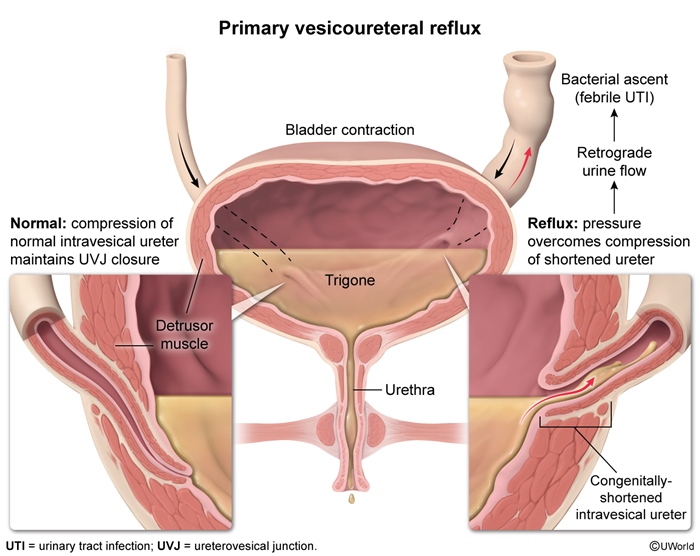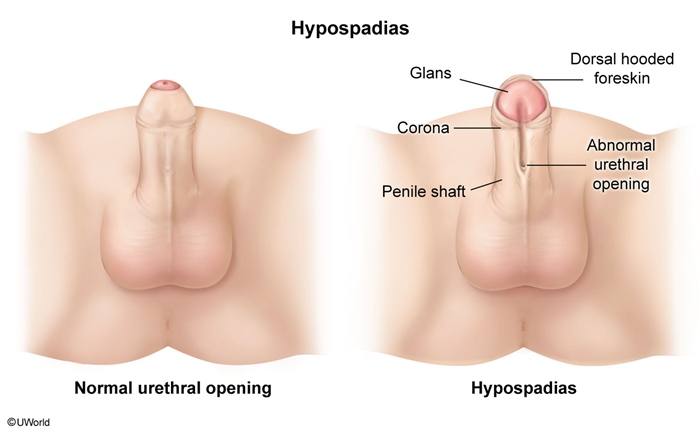Epispadias
Article Sections
Introduction
Epispadias is a rare congenital anomaly of the urethra in which the opening (ie, meatus) is located on the dorsal surface of the penis (Figure 1). Epispadias can occur in isolation or with bladder exstrophy (Figure 2), a more severe congenital anomaly referred to as the bladder exstrophy-epispadias complex. This article will focus on isolated epispadias.
Pathogenesis and risk factors
Epispadias likely results from a defect in the development of the lower (ie, infraumbilical) abdominal wall. The cloacal membrane (ie, cloaca) is composed of ectodermal and endodermal layers and forms a barrier between the developing gut and the amniotic cavity in early embryogenesis. Normally, mesenchymal cells migrate to the cloaca to reinforce the ectodermal and endodermal layers and eventually give rise to the pelvic bone and supporting musculature. Shortly thereafter, the urorectal septum descends and fuses with the cloacal membrane, and the cloacal membrane perforates, forming the urogenital membrane (barrier between the urogenital sinus and the amniotic cavity) and the anal membrane (barrier between the hindgut and the amniotic cavity).
Continue Learning with UWorld
Get the full Epispadias article plus rich visuals, real-world cases, and in-depth insights from medical experts, all available through the UWorld Medical Library.
Figures



